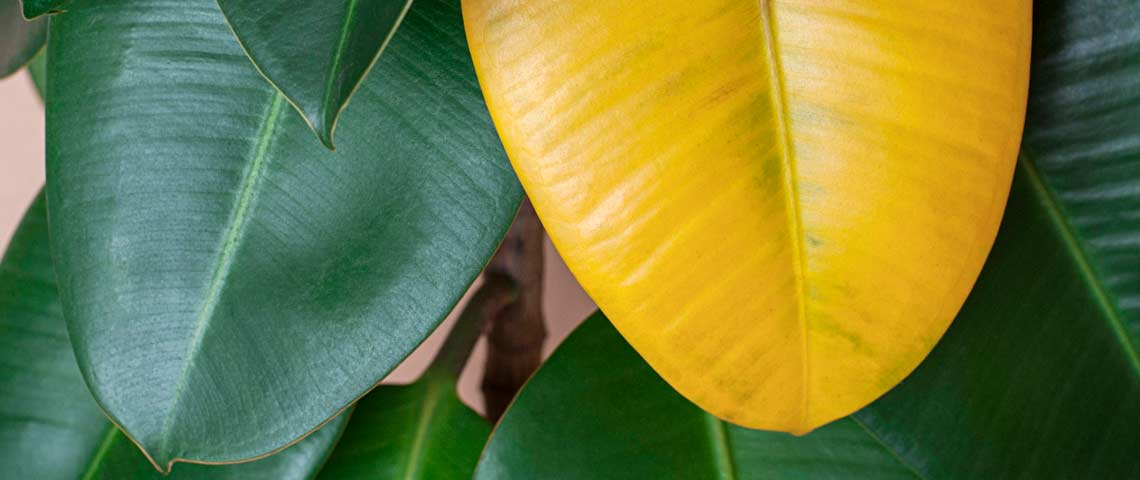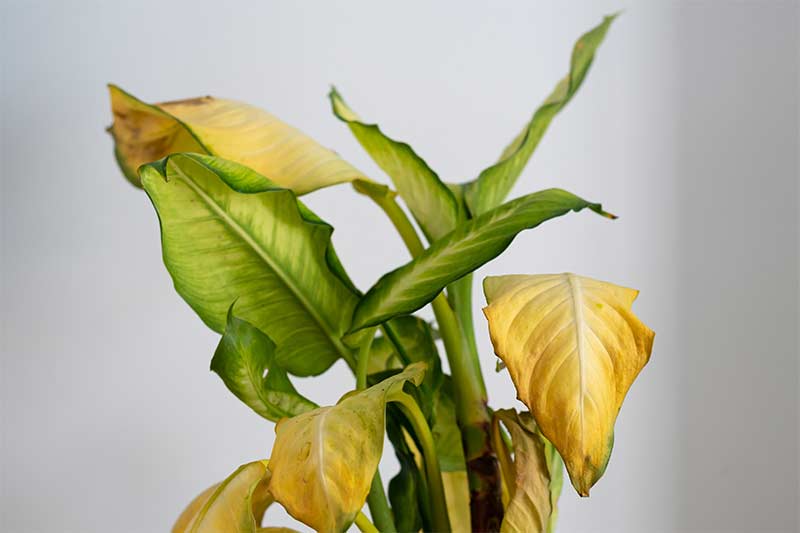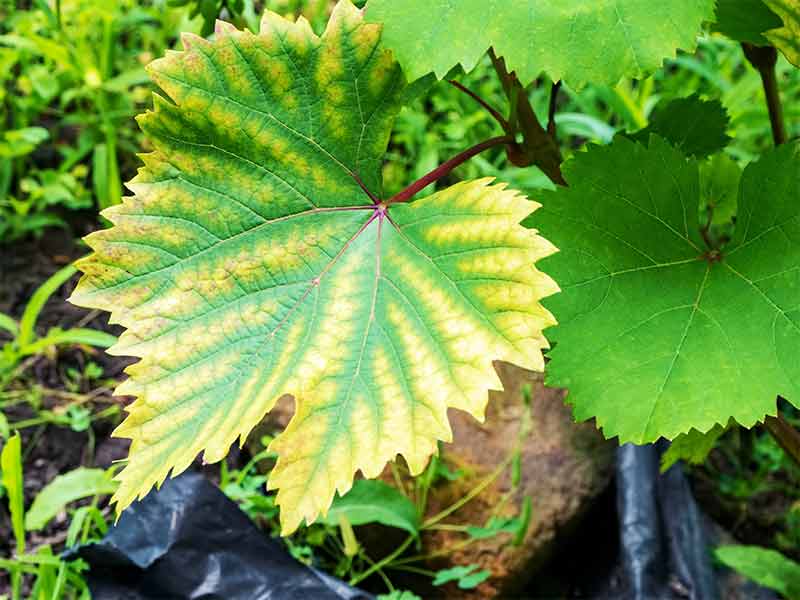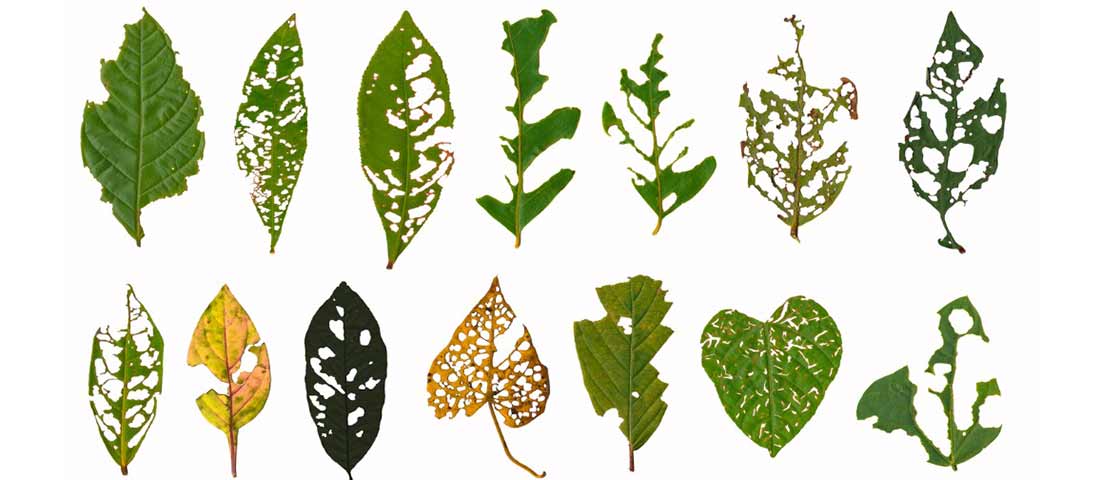Why Plant Leaves Turn Yellow and How to Fix Them
From your living room to your yard, plants with rich green leaves beautify your world. But sometimes, when you least expect it, your prized plant leaves turn yellow. Known as chlorosis, yellowing happens when something interferes with your plant's chlorophyll — that's the plant pigment behind that gorgeous green you love.
The good news is yellow leaves are a call for help. Answer the call and take the right steps, and you can fix yellow leaves and prevent their return. Most yellow leaves trace back to one of these problems:
- Poor Drainage or Improper Watering
- Root Damage or Compacted Roots
- Inappropriate Soil pH
- Lack of Needed Nutrients
The No. 1 cause of yellow, wilting foliage? Improper watering.
Poor Drainage or Improper Watering
Water issues — either too much or too little — are the leading reason behind yellow leaves. When your plant's soil is overly wet, roots can't breathe. They suffocate, shut down and stop delivering the water and nutrients plants need. Underwatering or drought has the same basic effect. With too little water, plants can't take up essential nutrients. Before you know it, you have yellow leaves.
To fix or prevent water-related problems, start with your soil. In your yard, avoid planting in low-lying spots or where rain or irrigation puddles stick around. Improve your native soil's health and structure to provide the well-draining soil plants need. Pennington Rejuvenate Natural & Organic Garden Soil Mix revitalizes native garden soil with essential plant nutrients and Earth-friendly ingredients like earthworm castings, bio-stimulants and sustainably sourced peat to create a soil environment that nurtures plant roots.
If you grow in containers, choose pots with good drainage holes and keep saucers free of excess water. Use a premium potting soil mix designed especially with containers in mind. Pennington Rejuvenate Premium All Purpose Potting Soil Mix combines the same nourishing, revitalizing ingredients found in our garden soil mix, plus a wetting agent and water-holding crystals to help you optimize your water and break the cycle of too little and too much.
Before you water, give your soil the "finger test." (Moisture meters work too, but this is more fun.) Just stick your index finger a few inches into the soil. As a general rule, water only when soil feels dry. Then water thoroughly and deeply. If soil feels cool and moist, wait a few days. Always allow soil to dry slightly before you water again.
Root Damage or Compacted Roots
Root damage happens in lots of ways, from wayward trowels or shovels to root rot and other disease. Once damaged, roots may struggle to deliver what your plant needs. Outdoors, compacted landscape soil inhibits the movement of water, oxygen and nutrients. When container plants outgrow their pots, compacted roots result. In both cases, roots can't function properly and yellow leaves reveal the problem.
With in-ground plantings, improve soil structure and compaction by incorporating Pennington Rejuvenate Natural & Organic Garden Soil Mix into your planting site. Garden gypsum can also improve soil compaction, especially in heavy clay soils, and help keep leaves green.
To check containers for damaged or compacted roots, gently slide your plant out of its pot. If it's large, get a friend to help. Then turn the container — gently — on its side and ease the root ball out. (You'll get an up-close and personal look at soil moisture, too.) Healthy plant roots are whitish-yellow. Dark, rotting roots smell foul.
If roots are rotten and diseased, it's time to consider a new plant. If compaction's the problem, prune unhealthy roots, gently loosen roots and repot in a larger container with Pennington Rejuvenate Premium All Purpose Potting Soil Mix.
When soil pH gets out of balance, pH-induced nutrient deficiencies cause yellow leaves.
Inappropriate Soil pH
If you're growing container plants and feeding regularly with premium plant fertilizers like our Pennington Rejuvenate plant foods, soil pH probably isn't the cause of your plant's yellow leaves. But if yellow leaf problems are popping up in your yard and garden plantings, soil pH may be the key.
Soil pH influences whether plants can access nutrients. Nutrient availability changes as soil pH moves up or down the pH scale. Most plants, including garden veggies and pollinator-friendly flowers, do best with soil pH in the neutral to slightly acidic range, near 6.0 to 7.0. Acid-loving plants like rhododendrons and blueberries prefer soil near 4.5 to 6.0 pH.
When soil pH becomes lower or higher than a plant's optimal range, some preferred nutrients become less available to it. Even though nutrients are present, plants can't take them up — that includes nutrients from fertilizers you add. Leaves turn yellow and stay yellow until pH issues get fixed.
A simple soil test eliminates the guesswork (and stress-work) so you know where your soil pH is at. Most soil testing labs also give recommendations for soil amendments to restore pH balance. Once pH is fixed, nutrients are freed up again and green leaves are back on track.
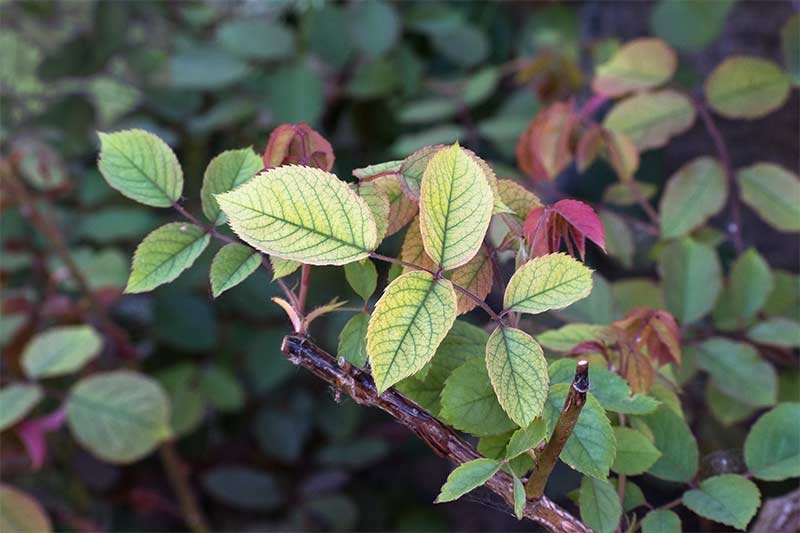
Leaf patterns of chlorosis provide clues to nutrients your plant needs.
Lack of Needed Nutrients
When yellow leaves happen where soil pH is spot on, you may have a true nutrient deficiency on your hands. Some nutrients are very mobile in soil. Nitrogen, for example, moves through soil easily and leaches away. Unless you regularly replace soil nitrogen with fertilizer applications, nitrogen deficiencies turn lawns and plant leaves yellow or pale green.
If nutrient deficiencies are to blame, proper fertilization and premium plant foods can help. Identifying which leaves turn yellow first and the yellow pattern on your leaves provides clues to common deficiencies such as these:
- Nitrogen deficiency shows up as a general yellowing. Older leaves closest to the stem turn yellow first. As it progresses, yellowing moves outward, eventually reaching young leaves.
- Potassium deficiency shows itself when leaf edges turn bright yellow, but the inner leaf stays green. Older leaves show symptoms first, and leaf edges soon turn brown.
- Magnesium deficiency starts as yellow patches between leaf veins on older leaves. Veins stay green as yellow moves from the leaf center out. Leaf edges turn yellow last.
- Iron deficiency also shows as yellowing between leaf veins, but it hits young leaves on plant tops and branch tips first.
- Sulfur deficiency starts with the newest leaves, turning them yellow throughout.
Relationships between nutrients within your soil — and within plants — are complex. But once you start learning about them, you start really appreciating how amazing soil and plant nutrition can be. For example, when potassium is in short supply, iron becomes less available to plants. Yet excess potassium ties up calcium, magnesium and nitrogen, causing deficiencies of those nutrients. That's why feeding your plants with trusted, premium plant foods is so important to keeping them free from yellow leaves.
Pennington Rejuvenate Plant Food All-Purpose 4-4-4 provides an ideal blend of essential primary nutrients to revitalize your soil, along with a beneficial blend of natural and organic ingredients to nourish plants from the inside out. Plus earthworm castings, humic acids and beneficial microorganisms work in harmony to strengthen your plants against stress and drought — and deliver bigger, more bountiful fruits and blooms than unfed plants.
For acid-loving plants, Pennington Rejuvenate Plant Food Evergreen & Azalea 4-3-3 provides essential nutrients including iron to help keep foliage beautiful. When magnesium or sulfur is lacking, Pennington Epsom Salt corrects yellow leaves. And when low iron's the issue, iron-containing fertilizers for yards and gardens fight deficiencies and help keep your world green.
At Pennington, we understand how much beautiful, vibrant plants bring to your life and your home. Let us help you make your garden dreams come true and keep yellow leaves at bay. Have a question? We'd love to hear it — and we'd really love to stay in touch. We're here to help you grow and nurture your roots and your slice of earth.
Always read product labels thoroughly and follow instructions.

